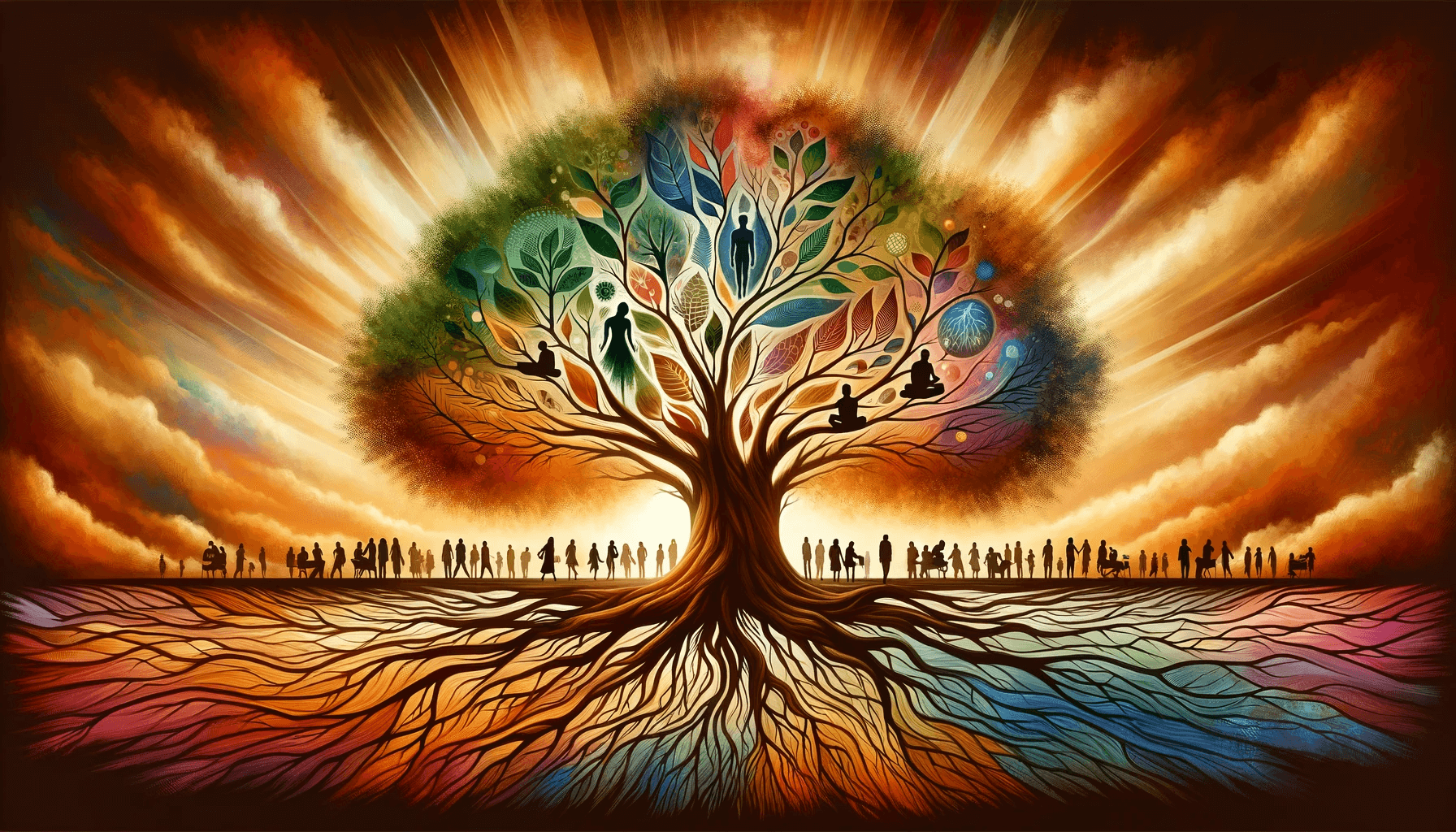Sponsor Cosmic Energy Bracelet
Table of Contents
What is cause and effect?
Cause and effect is a fundamental concept that helps us understand the relationship between actions and their outcomes. It is the understanding that every action we take has a consequence, and these consequences can be either positive or negative. By recognizing cause-and-effect relationships, we can make more informed decisions and be more mindful of the impact of our actions on ourselves and others.
The importance of recognizing cause-and-effect relationships
Understanding cause and effect is crucial for personal growth and development. When we recognize the consequences of our actions, we become more responsible and accountable for our choices. It allows us to make better decisions, as we can anticipate the potential outcomes of our actions. By understanding cause and effect, we can also learn from our mistakes and make adjustments to avoid negative consequences in the future.
Examples of cause and effect in everyday life
Cause and effect are evident in various aspects of our daily lives. For example, if we neglect our physical health by not exercising and eating unhealthy foods, the consequence may be weight gain and poor overall well-being. On the other hand, if we prioritize our health by engaging in regular exercise and consuming nutritious meals, the consequence may be improved physical fitness and increased energy levels.
In relationships, cause and effect are also at play. If we treat others with kindness and respect, the consequence may be stronger and more meaningful connections. Conversely, if we engage in negative behaviors such as lying or disrespect, the consequence may be damaged relationships and a loss of trust.
The butterfly effect: how small actions can have big consequences
The butterfly effect is a concept that highlights how small actions can lead to significant and unpredictable consequences. It is based on the idea that a butterfly flapping its wings in one part of the world can potentially cause a hurricane in another part. This demonstrates the interconnectedness of our actions and how even the smallest choices can have far-reaching effects.
For example, consider a scenario where you recycle a plastic bottle instead of throwing it in the trash. On its own, this is a small and insignificant action. However, when multiplied by millions of people making the same choice, it can significantly reduce plastic waste, helping preserve the environment and protect wildlife.
The domino effect: when one action leads to a chain reaction
The domino effect is another powerful illustration of cause and effect. It occurs when one action sets off a chain reaction of subsequent events. Like a line of dominoes, once the first one falls, it triggers a sequence of falling dominoes.
Imagine you decide to start a small community garden in your neighborhood. This action may inspire others to follow suit and create their gardens. As more people get involved, the community becomes more connected, and everyone benefits from the fresh produce and sense of community. This is a prime example of how one action can lead to a chain reaction, creating a positive impact on a larger scale.
The ripple effect: how one action can impact a larger community
The ripple effect is similar to the domino effect but focuses more on the spreading influence of one action. It is the idea that taking a positive action can inspire others to do the same, creating a ripple effect of positive change.
For instance, if you volunteer at a local charity, your dedication and enthusiasm inspire others to get involved. As more people join in, the charity becomes more effective in its mission and the community benefits from the collective efforts. This ripple effect demonstrates how one action can lead to a larger impact, extending beyond the initial act.
The snowball effect: when small actions accumulate to create a larger impact
The snowball effect is the concept that small actions, when accumulated over time, can create a significant impact. Like rolling a small snowball down a hill, it gradually gathers more snow and grows larger as it progresses.
Suppose you start saving a small portion of your income each month. Initially, the impact may seem minimal, but your savings will accumulate and grow as time goes on. Eventually, you will have a substantial amount of money saved, providing you with financial security and the ability to pursue your goals. This snowball effect demonstrates the power of consistency and the cumulative effect of small actions.
The long-term effects of small actions
It is essential to recognize that small actions can have long-lasting effects. The choices we make today can shape our future and the world we live in. For instance, adopting a healthy lifestyle by exercising regularly and eating nutritious foods can lead to improved overall health and a reduced risk of chronic diseases in the long run.
Similarly, investing time and effort in developing meaningful relationships can result in a strong support network that lasts a lifetime. Small actions may seem insignificant at the moment, but their impact can accumulate and create a lasting positive influence.
How to apply the concept of cause and effect to your own life
Applying the concept of cause and effect to your life involves recognizing the connections between your actions (causes) and the outcomes or consequences they produce (effects). This understanding can help you make more informed decisions and improve various aspects of your life. Here’s how you can apply this concept:
- Set Clear Goals: Identify what you want to achieve in different areas of your life, such as health, career, relationships, or personal development.
- Analyze Your Actions: Reflect on your current actions and habits. Consider how they are contributing to or hindering your goals.
- Predict Outcomes: Think ahead about the potential effects of your actions. Ask yourself, “If I do this, what is likely to happen?”
- Make Informed Decisions: Use your understanding of cause and effect to make choices that are more likely to lead to desirable outcomes. For example, if you want to improve your health, you should exercise regularly and eat healthier foods.
- Learn from Experience: Pay attention to the outcomes of your actions. If the results are not what you expected or desired, consider what changes you need to make.
- Adjust Your Behavior: If certain actions aren’t producing the desired results, be willing to change your approach. This might involve developing new habits, seeking additional knowledge, or asking for help.
- Understand Interconnectedness: Recognize that many factors can influence outcomes. Your actions might interact with other variables, so be open to examining and adapting to these complexities.
- Plan for Long-Term Effects: Some effects are not immediate and may develop over time. Consider the long-term impacts of your actions, especially for significant decisions like career choices or investments.
- Embrace Responsibility: Accept that you have significant control over many aspects of your life through your choices and actions. This mindset can empower you to take more proactive steps toward your goals.
- Reflect Regularly: Review the outcomes of your actions and progress toward your goals. This ongoing reflection can help you stay aligned with your objectives and adapt as needed.
By applying the concept of cause and effect in your life, you can become more proactive and intentional in your decision-making, leading to more positive outcomes and personal growth.
Conclusion: the power of small actions in shaping our lives and the world
In conclusion, cause and effect is a fundamental concept that helps us understand the relationship between actions and their outcomes. Small actions can lead to significant consequences, whether through the butterfly effect, the domino effect, the ripple effect, or the snowball effect.
By recognizing cause and effect relationships, we can make more informed decisions and be more mindful of the impact of our actions on ourselves and others. The power of small actions should not be underestimated, as they have the potential to shape our lives and the world we live in. So, let us embrace the power of cause and effect and make choices that lead to positive and meaningful consequences.
CTA: Take a moment to reflect on your recent actions and their potential consequences. How can you apply the concept of cause and effect to make more mindful choices? Share your thoughts and experiences in the comments below.





Leave a Reply